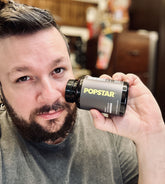Bondage is a practice often associated with consensual restraint and the exploration of power dynamics within intimate or erotic contexts. From a men’s health perspective, it can be viewed as a form of sexual expression that merges curiosity, trust, psychology, and physical sensation. In this comprehensive guide, we will explore the definition of bondage, its history, potential benefits, medical considerations, psychological aspects, and frequently asked questions to ensure you have well-rounded knowledge on the subject.
Table of Contents
- Definition of Bondage
- Historical and Cultural Context
- Psychological Aspects of Bondage
- Physical Health Considerations
- Safety Precautions in Bondage
- Potential Benefits of Bondage
- Potential Risks of Bondage
- Myths and Misconceptions
- Bondage and Men’s Sexual Health
- Frequently Asked Questions
- Conclusion
- References
Definition of Bondage
Bondage typically refers to the practice of using restraints—such as ropes, cuffs, ties, or other materials—to immobilize a partner as part of an intimate or erotic scenario. It is often considered a subset of the broader spectrum of BDSM (Bondage, Discipline, Dominance, Submission, Sadism, Masochism). While it can certainly carry a sexual undertone, bondage may also be about trust, vulnerability, and shared physical and emotional exploration.
From a clinical or men’s health perspective, bondage can be placed in the context of sexual wellness. It involves communication, mutual respect, and safety measures to facilitate a fulfilling experience for all participants. This emphasis on consent and safety places bondage within the scope of healthy sexual practices that prioritize well-being and positive relationships.
Historical and Cultural Context
The roots of bondage as a practice stretch back through various cultures and time periods. Throughout history, different societies have explored forms of erotic restraint as part of traditional practices, rituals, or artworks. One notable example is Shibari, the Japanese art of rope bondage, which has existed for centuries and emphasizes intricate rope patterns and aesthetics as much as it does eroticism.
In Western contexts, bondage has been depicted in art, literature, and even psychology texts. Modern practice of bondage gained broader visibility in the mid to late 20th century with the sexual revolution, the rise of sex-positive culture, and more openness about forms of erotic play that deviate from conventional norms. Today, bondage is often found in mainstream discussions around sexual exploration, as well as men’s health columns that focus on the importance of communication and trust in intimate relationships.
As cultural attitudes toward sexuality and pleasure broaden, bondage continues to be recognized as a nuanced practice that can support unique forms of intimacy, creativity, and emotional connection when approached responsibly.
Psychological Aspects of Bondage
Engaging in bondage can invoke a complex range of emotions, often spurred by concepts of trust, vulnerability, power, and submission. These emotional components can be thrilling for some individuals and couples, adding layers of excitement to the sexual experience. Below are key psychological elements involved in bondage:
- Trust & Communication: Agreeing to restraint and control inherently calls for a high level of trust between partners. Partners must communicate boundaries, preferences, and safe words.
- Power Dynamics: Bondage scenarios often involve a clear distinction between the person who is restrained (the submissive) and the person who is applying the restraints (the dominant). This power dynamic can lead to feelings of excitement, heightened arousal, or emotional release.
- Emotion Regulation: For some, the experience of being restrained can serve as a form of stress relief or a means of channeling emotional energy. Alternatively, controlling a partner’s movement might create a sense of responsibility and care.
- Heightened Sensation: Restriction can direct focus onto other sensations and intensify physical pleasure, possibly leading to a deeper state of arousal or intimacy.
From a men’s mental health standpoint, bondage can be a healthy outlet for stress relief, creative expression, and relationship bonding. However, it’s crucial to approach it in a safer, consensual context. Consulting with a mental health professional or a specialized sex therapist can be beneficial if concerns or questions arise.
Physical Health Considerations
While bondage, when performed responsibly, can be safe, it does involve physical restraint that may place stress on the body. Below are important factors to keep in mind:
- Circulation: Any restraint that is too tight can cut off blood flow. Proper positioning of ropes or cuffs, and regular checks for changes in skin color or temperature, are essential.
- Nerve Compression: Nerves can be pinched if tied incorrectly, leading to numbness, tingling, or long-term damage if not addressed. Proper knowledge of nerve-safe areas is critical.
- Range of Motion: Individuals with joint issues or injuries should consult a healthcare provider before engaging in certain forms of bondage. Overextension or odd angles can exacerbate underlying problems.
- Allergies & Materials: Hypoallergenic or body-safe materials are recommended to avoid allergic reactions. Latex allergies, for example, may complicate the use of certain bondage items like latex cuffs or collars.
- Cleanliness & Hygiene: As with any intimate activity, cleanliness helps prevent infections or skin irritation. Properly cleaning and storing bondage gear is imperative.
It’s recommended that men who experience ongoing medical conditions, such as heart issues or high blood pressure, consult with a healthcare professional for personalized guidance. Adequate health screening and open communication with partners can go a long way in ensuring a safe encounter.
Safety Precautions in Bondage
Safety cannot be overemphasized in bondage. The presence of restraints calls for a higher degree of awareness and preparedness. Below are best practices for safer play:
- Consent is Paramount: Both partners must enthusiastically agree to all activities. Always discuss boundaries and comfort levels beforehand.
- Safe Words: Establish a safe word that can immediately stop the activity if someone becomes uncomfortable or experiences pain. Many people use a coded system like “green” for continue, “yellow” for slow down, and “red” for stop.
- Accessibility of Safety Tools: Keep scissors or quick-release mechanisms within easy reach to rapidly remove restraints if necessary.
- Check-Ins: Periodically check in with your partner to gauge their comfort, circulation, and emotional state.
- Stay Sober: Avoid alcohol or drug use when engaging in bondage. A clear head is essential for good judgment and swift response to potential issues.
- Respect Boundaries: Should your partner express discomfort or a desire to stop, do so immediately. Ongoing mutual respect lays the foundation for a fulfilling experience.
In a men’s health context, creating a supportive environment in which both parties feel safe to share their needs and limits can help minimize risks and enhance the overall experience.
Potential Benefits of Bondage
While bondage might seem unconventional to some, many participants report a range of benefits tied to both psychological and relational well-being. Some of these potential benefits include:
- Enhanced Intimacy: Acts of consensual restraint often require deep levels of communication, trust, and cooperation, which can bring couples closer.
- Stress Relief: The focused nature of bondage may offer an escape from daily stressors, allowing participants to immerse themselves in sensory or emotional play.
- Improved Communication: Negotiating boundaries and discussing desires fosters open dialogue—a crucial skill in any healthy relationship.
- Boosted Sexual Exploration: Introducing new elements can reinvigorate a couple’s sex life, making it more dynamic and satisfying.
- Heightened Self-Awareness: Understanding personal limits and preferences can lead to greater self-knowledge, sexual confidence, and empowerment.
Potential Risks of Bondage
Despite the many potential positive facets, there are risks associated with bondage that participants need to consider:
- Physical Injury: Misuse of restraints or lack of knowledge can result in bruises, cuts, nerve damage, or circulatory issues.
- Emotional Injury: If boundaries are not respected, participants can experience guilt, shame, or a breach of trust. Clear communication is crucial.
- Psychological Toll: Intense scenes can trigger emotional reactions, fear, or anxiety, especially for those with past trauma experiences.
- Relationship Strain: Poor communication or unwillingness to understand each other’s comfort levels may lead to distrust or resentment.
Practicing bondage responsibly involves acknowledging these risks and mitigating them through education, caution, and robust communication.
Myths and Misconceptions
A number of misconceptions surround bondage and BDSM in general, many of which can be misleading or stigmatizing. Some of the common myths include:
-
Myth: Bondage is Abusive.
Reality: When practiced correctly, bondage is a consensual activity that emphasizes the welfare and comfort of all participants. Abuse, in contrast, lacks consent. -
Myth: Bondage is Physically Dangerous.
Reality: Though physical risks exist, proper skill development, communication, and the right gear minimize injury. It can be done safely with due diligence. -
Myth: Only "Extreme" Couples Do Bondage.
Reality: Bondage is explored by individuals and couples of diverse backgrounds. Many find it a normal extension of their sexual or intimacy practices. -
Myth: Bondage is Always Sexual.
Reality: While bondage often has a sexual component, some people practice rope tying or restraint purely for artistic or aesthetic reasons, particularly in disciplines like Shibari. -
Myth: Interest in Bondage Indicates a Psychological "Problem."
Reality: Many individuals engage in bondage as a healthy form of expression. It’s not indicative of a dysfunction but rather a preference or kink, as long as it is consensual.
Bondage and Men’s Sexual Health
Men’s sexual health encompasses physical, emotional, and relational dimensions. Bondage can play a positive role when approached with understanding and responsibility:
- Improved Emotional Connection: Exploring bondage can foster deeper emotional bonds, thereby enhancing communication and empathy between partners.
- Addressing Sexual Stagnation: Some men look to bondage to revitalize a routine sex life, injecting novelty and excitement that can reduce performance pressure.
- Body Confidence: Engaging in trust-based activities may encourage men to overcome body-image concerns by focusing on sensation, intimacy, and shared pleasure rather than physical insecurities.
- Stress Relief: Many men juggle pressures from work, family, or societal expectations. Bondage can provide an opportunity for catharsis or liberation within a safe, consensual dynamic.
Nevertheless, it is important to be mindful of any underlying health conditions, relationship tensions, or psychological vulnerabilities. Consultation with a mental health professional or physician can help identify any contraindications.
Frequently Asked Questions
What is the difference between bondage and BDSM?
Bondage is one facet of BDSM, primarily dealing with restraints. BDSM stands for Bondage and Discipline, Dominance and Submission, Sadism and Masochism—a broader category that covers various activities involving power play, erotic pain, and dominance/submission. Bondage focuses specifically on restricting a partner’s movement.
Is bondage always sexual?
Not necessarily. Though bondage is commonly seen in erotic contexts, it can also be practiced for artistic or aesthetic reasons, such as in Japanese Shibari, where rope work can be appreciated as performance art rather than purely sexual activity. Ultimately, context and consent define the scope of bondage.
Can bondage improve communication in relationships?
Yes. One of the key requirements for bondage is an open, honest dialogue about limits, desires, and boundaries. Communicating these aspects can extend beyond the bedroom, facilitating day-to-day relationship communication. This dynamic often brings couples closer.
Are there health risks associated with bondage?
Some health risks include restricted blood flow, potential nerve damage, and emotional distress if boundaries are ignored. To minimize these, proper techniques, frequent check-ins, and immediate access to scissors or quick-release mechanisms are essential.
Does bondage require special equipment?
You can use ropes, cuffs, or specially designed bondage gear. Regardless of what you choose, safety features—such as quick-release clips—are crucial. Beginners might opt for softer restraints (e.g., scarves, padded cuffs) to reduce the chance of abrasions or nerve compression.
How do I safely introduce bondage to my partner?
Start by having a candid, respectful conversation about interests, goals, and worries. Suggest reading articles or guides together. If your partner is open to experimenting, begin with low-intensity restraint options under well-lit conditions. Keep open dialogue during the experience and check in frequently.
Should I be worried about pain in bondage?
If bondage is done correctly and consensually, pain should be minimal or intentionally controlled. Positioning and tightness of restraints play big roles. If unexpected pain occurs, stop immediately and evaluate what might be causing it, adjusting rope tension or switching positions.
Is bondage addictive?
Bondage itself is not inherently addictive. However, any sexual practice can become psychologically reinforcing if it is the sole means of achieving sexual pleasure. Maintaining a balanced approach to intimacy, including other forms of sexual and emotional connection, is advisable.
Does bondage ever lead to emotional harm?
Emotional harm can occur if consent and boundaries are not respected. If one partner feels pressured or ignored, psychological distress can result. Clear communication, use of safe words, and mutual respect—before, during, and after the session—are key in preventing emotional harm.
Is bondage suitable for people with certain medical conditions?
It depends on the condition. People with cardiovascular issues, joint problems, or chronic pain conditions should consult a healthcare provider before engaging in bondage. Adjustments, like avoiding certain positions or durations, may be necessary for individual safety.
Can bondage benefit men experiencing sexual dysfunction?
For some men, introducing novelty (such as bondage) can alleviate performance-related stress and psychological barriers. However, bondage is not a standalone treatment for erectile dysfunction (ED) or other sexual issues. Always seek professional advice for underlying medical conditions.
How can I educate myself further about bondage?
Consider taking workshops, reading reputable books, or consulting with sex therapists. Learning is crucial for both safety and enjoyment. Online resources, especially from recognized sexual health and BDSM communities, can also help.
What is aftercare, and why does it matter?
Aftercare refers to the period following a bondage session where participants physically and emotionally support each other. This might include cuddling, hydrating, talking about what felt good or uncomfortable, and addressing any emotional or psychological reactions. Aftercare promotes trust, healing, and connection.
Is bondage legal?
Generally, bondage among consenting adults is legal in most places, though specific laws may vary by region. It is important for all parties to be of legal age and to comply with local regulations. If uncertain, consult legal guidelines or local resources.
Will bondage cause permanent marks or scars?
When done properly, bondage should not result in permanent marks. Temporary indentations or minor bruising can occur. Using softer or wider materials reduces the risk of more significant marks. Should you notice prolonged bruising, numbness, or pain, seek medical attention.
Can the use of bondage aids be harmful if shared among multiple partners?
Sharing equipment can raise hygiene concerns. Thorough cleaning of bondage gear between use is crucial to avoid the transfer of bodily fluids, fungus, or bacteria. When in doubt, use individual sets of personal protective equipment (e.g., single-use rope or personal cuffs) to minimize health risks.
Conclusion
Bondage presents a multi-faceted avenue of exploration within men’s sexual health, offering potentially enhanced intimacy, communication practice, and a unique form of mutual trust. Nevertheless, it requires balanced awareness of risks—both physical and emotional—and a commitment to communicating effectively and respectfully with one’s partner.
From checking circulation to ensuring a safe mental space for all involved, the key to a positive bondage experience lies in preparedness, mutual understanding, and consent. Whether you are curious about adding variety to your sexual routine or simply wish to deepen intimacy with your partner, thorough knowledge and conscientious practice are paramount.
For those considering bondage but uncertain about the potential impact on existing health conditions, consulting with healthcare professionals, sex therapists, or counselors can help tailor an approach that respects individual limits and promotes a rewarding experience.
References
- International Society for Sexual Medicine. What is BDSM? https://www.issm.info
- Kinsey Institute. Research on Sexual Behavior and Attitudes. https://kinseyinstitute.org
- Mayo Clinic. Sexual Health: Understanding Sexual Health Basics. https://www.mayoclinic.org
- Planned Parenthood. BDSM & Kink. https://www.plannedparenthood.org
- American Psychiatric Association. Diagnostic and Statistical Manual of Mental Disorders (DSM-5). 5th ed.




















































